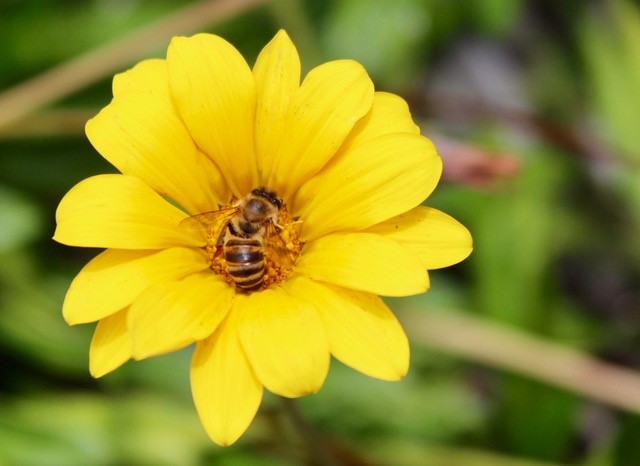Bee Blog May
01 May 2018
Hello,
I am Gerald Bushby (pronounced bush bee!) a beekeeper in Weston on the Green, a small village in Oxfordshire. I am going to be writing a monthly blog about the bees in my apiary. I hope you will find it interesting. I should start by saying that I am not an expert, having only kept bees for three years. Anything I say is my own personal opinion; I accept that there may often be other views and opinions.
Last month I was looking forward to the arrival of Spring and temperatures above 16deg C so that I could open up the hives to carry out my first inspections of the year. Two week ago started cool and damp with low temperatures followed by two days of high summer temperature’s, on one day rising to 27deg C. I therefore took the opportunity to open up the hives and see what condition they were in after the winter.
The most important question to be answered in spring, assuming that some bees have survived, is does the hive still have a queen? Although this time of year the numbers of bees in the hive is nowhere near their summer peak, spotting the queen is never easy. As I have probably mentioned before, most beekeepers mark their queen with a coloured paint dot on her thorax. The choice of colour denotes the year she was born. Most queen bees don’t live longer than 5 years so there are five standard colours. White for years ending in a 1 or 6, yellow for years ending in 2 or 7, red for 3 or 8, green for 4 or 9 and blue for 5 or 0.
In one of my hives there should be a queen with a blue dot, born in 2015, and in the other a queen with a yellow dot, born last year in 2017. Unfortunately I could not find either. That’s not so unusual as queens are very good at hiding. For most of their life the queen lives in a closed hive in the dark so taking out frames into the daylight can encourage her to hide away.
As I mentioned last month evidence that pollen is being taken into the hive is a good indication that there is a queen, she has started laying and that the pollen is needed to feed the new brood. In my hive where the yellow queen should be, where I had noticed pollen on the mouse guard, I was pleased to see a store of pollen on a frame, new brood, lava and as I was looking at one of the frames, a new bee being born. All seems as well as I could expect. I may not have seen the queen but she must be present as she is laying eggs.
In the other hive, the blue queen, things were no so good. Last month I had found no evidence of pollen on the mouse guard. When I opened up the hive there were fewer bees than the yellow queens hive and I could find no evidence of pollen being stored and more importantly no evidence of brood. Either the queen has not started laying or the queen has not survived the winter.
This is not good news, a hive without a laying queen will not survive. What are my options? The first thing to do is wait and check again in a weeks or two or when the weather allows. Being an older queen perhaps she is just slow in starting to lay eggs. If there is still no evidence of brood in a couple of weeks time I could try introducing a new queen, introducing a frame of brood from my other hive, or I could combine the bees in the queenless hive with the yellow queens hive.
Some beekeepers produce queens which they sell on to other beekeepers. Unfortunately new queens will not have been bred and mated for some time yet so this is not a likely option. I could move a frame of brood from the yellow queens hive into the queenless hive and provided it contains some eggs that are not older than a few days the queenless bees may raise a new queen from this brood themselves. Doing that however is a bit of a risk. Moving a frame of brood weakens the yellow queens hive at a time of year when I want them to be building up rapidly.
Perhaps the best option is to cut my losses and move the queenless bees into the yellow queens hive, strengthening the colony. This is not without difficulties however. Bees are territorial and if I just put one brood box on top of another they would fight and kill each other. The way to overcome this is by putting one brood box on top of the other but separating them by a sheet of newspaper. This gives the bees time to become accustomed to each other and for the queenless bees to become used to the yellow queens pheromones. After a few days they will chew their way through the sheet of newspaper and form one unit. Well that’s the theory. If I decide on this option it will be my first time trying this method so we will see. The weather has turned cold again, only 7 degC today so I will have to wait until the weather is warmer before I carry out another inspection. It has not been a good spring for my bees.
I am a proud supporter of the ‘Bees for development’ charity, my love of the bee drew me to this wonderful UK based charity and the great work they do around the world with Bees and the impact they can have on people’s lives. Please help me support this wonderful organisation, as 2BScientific will be doing with donations to this hard-working charity.
